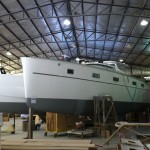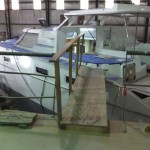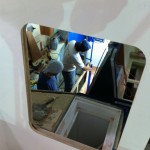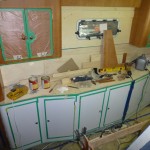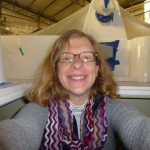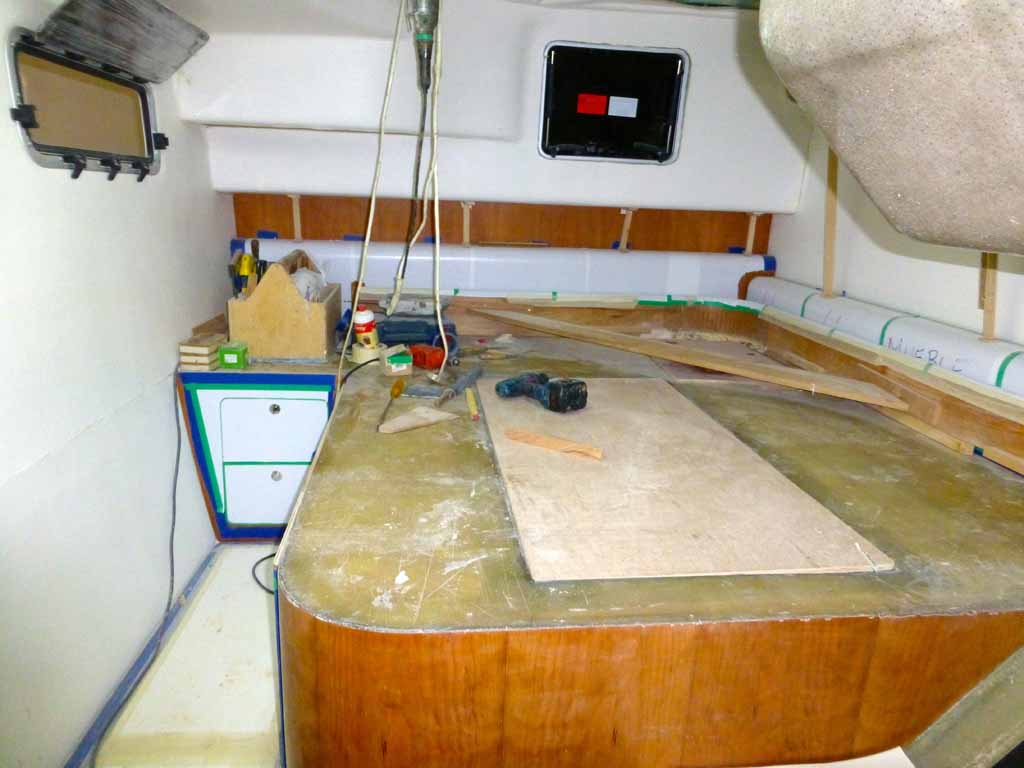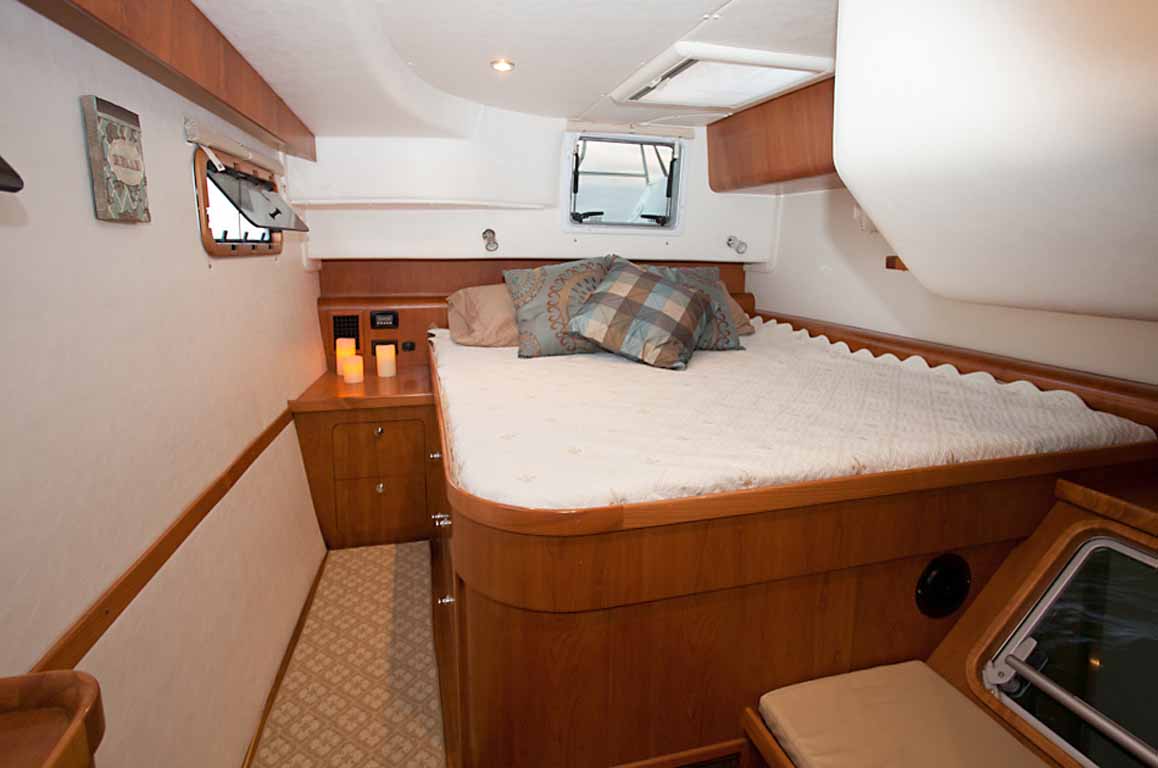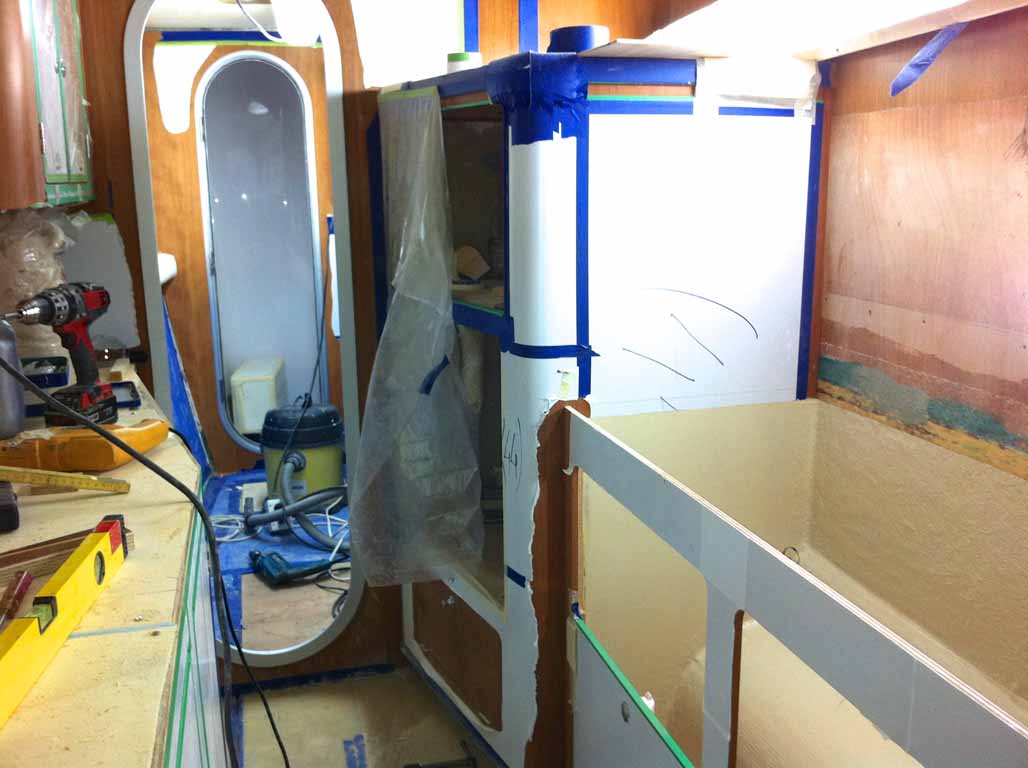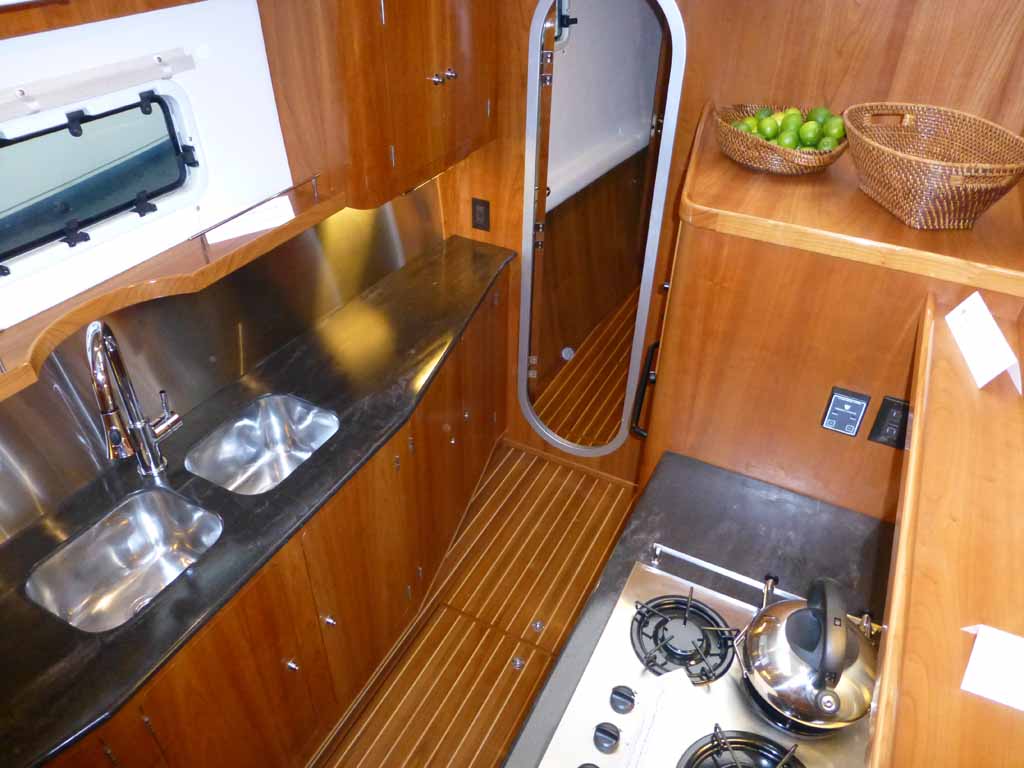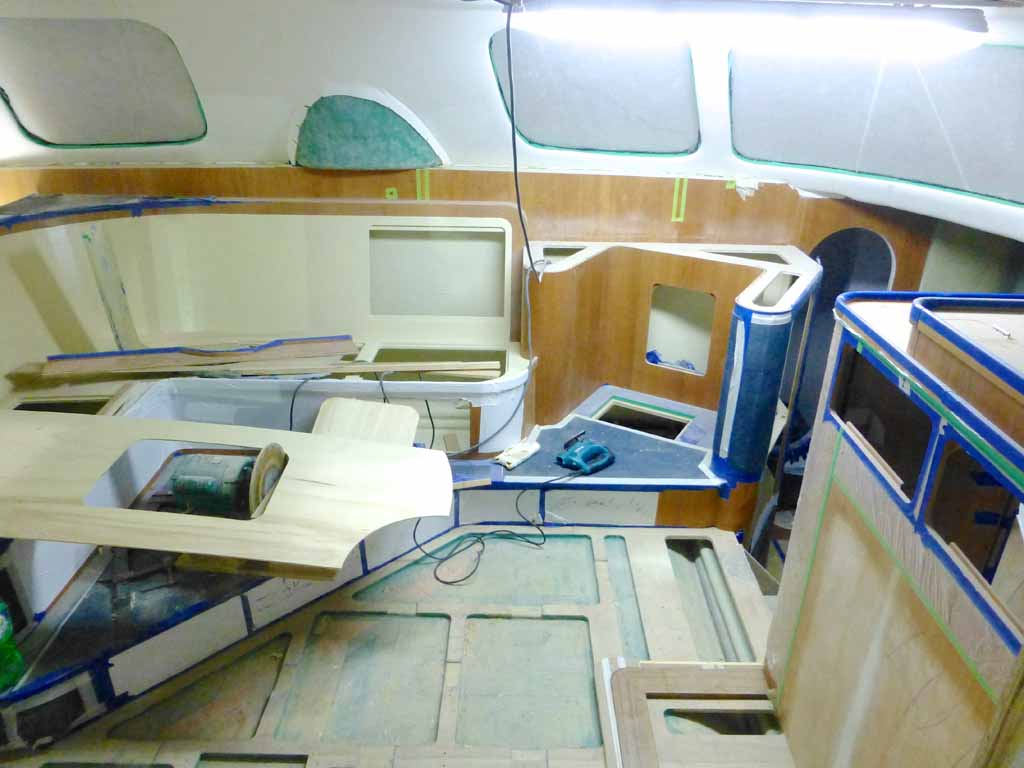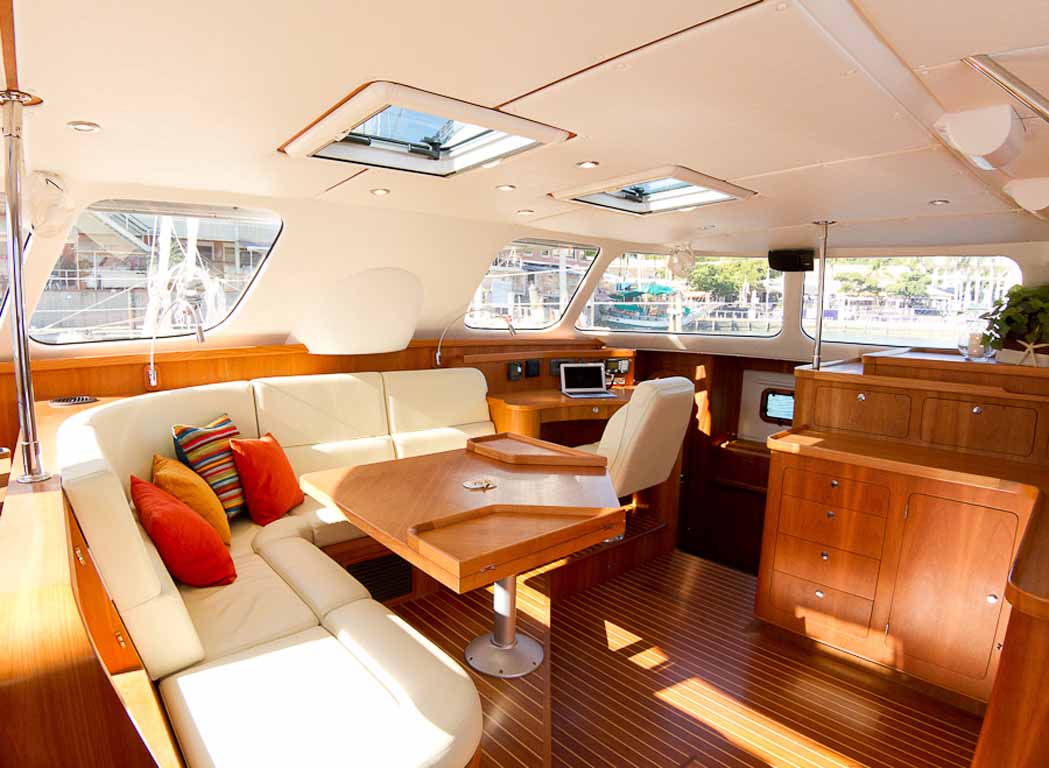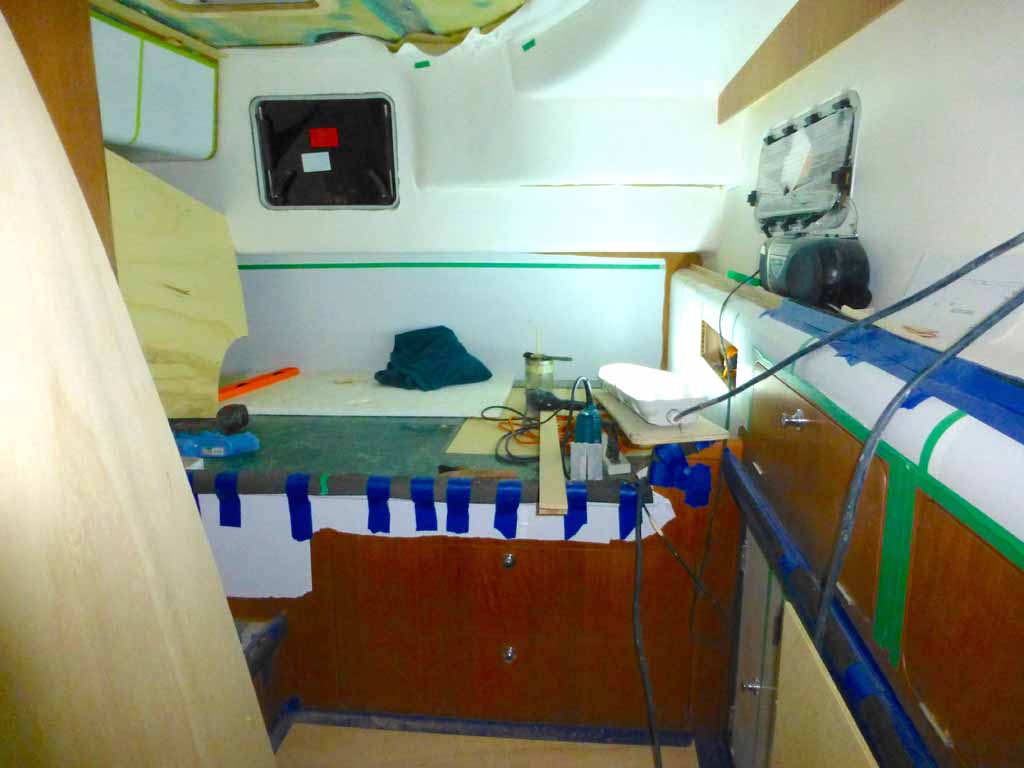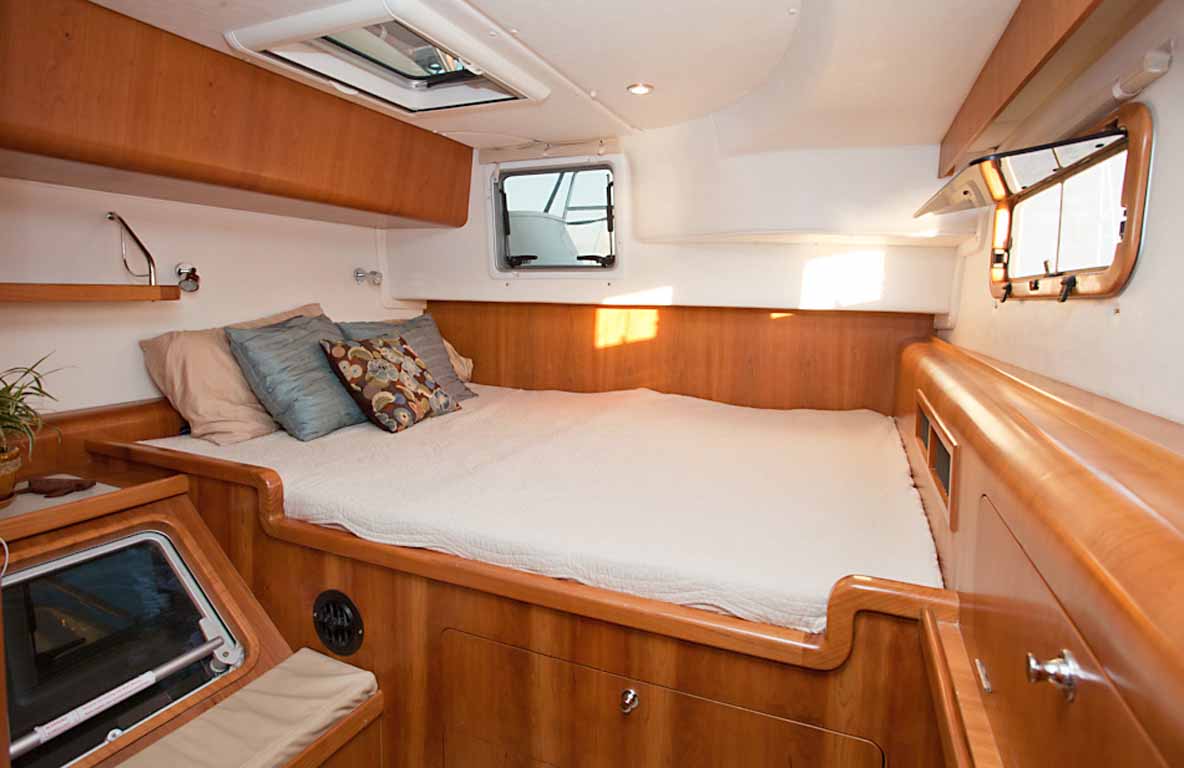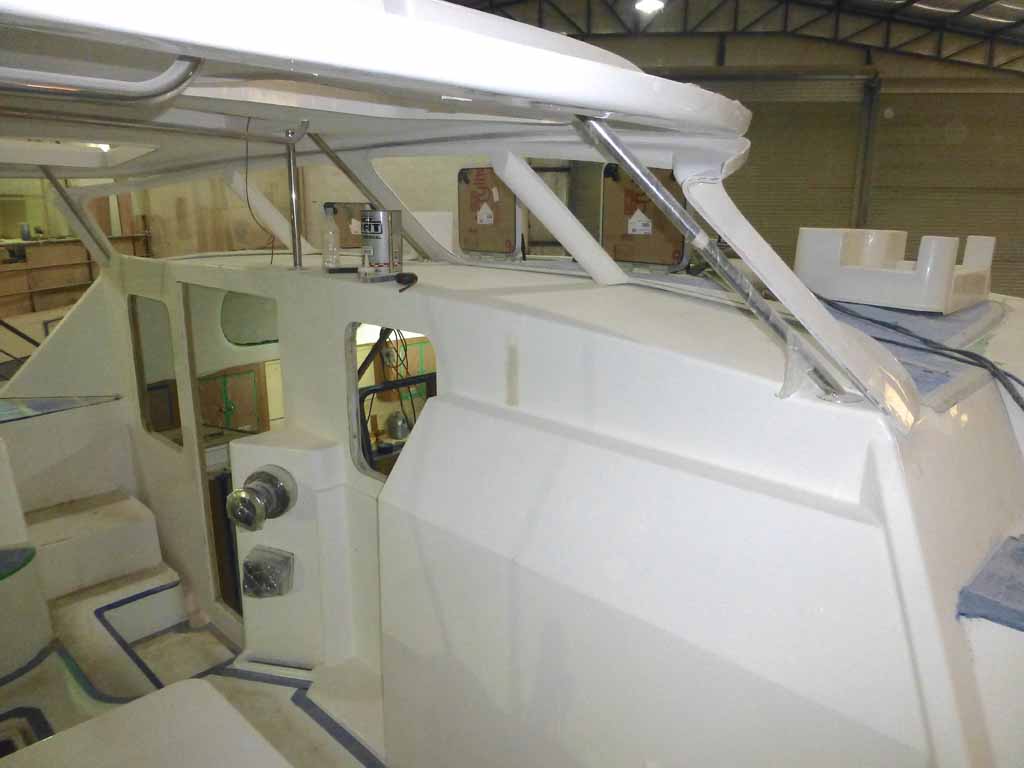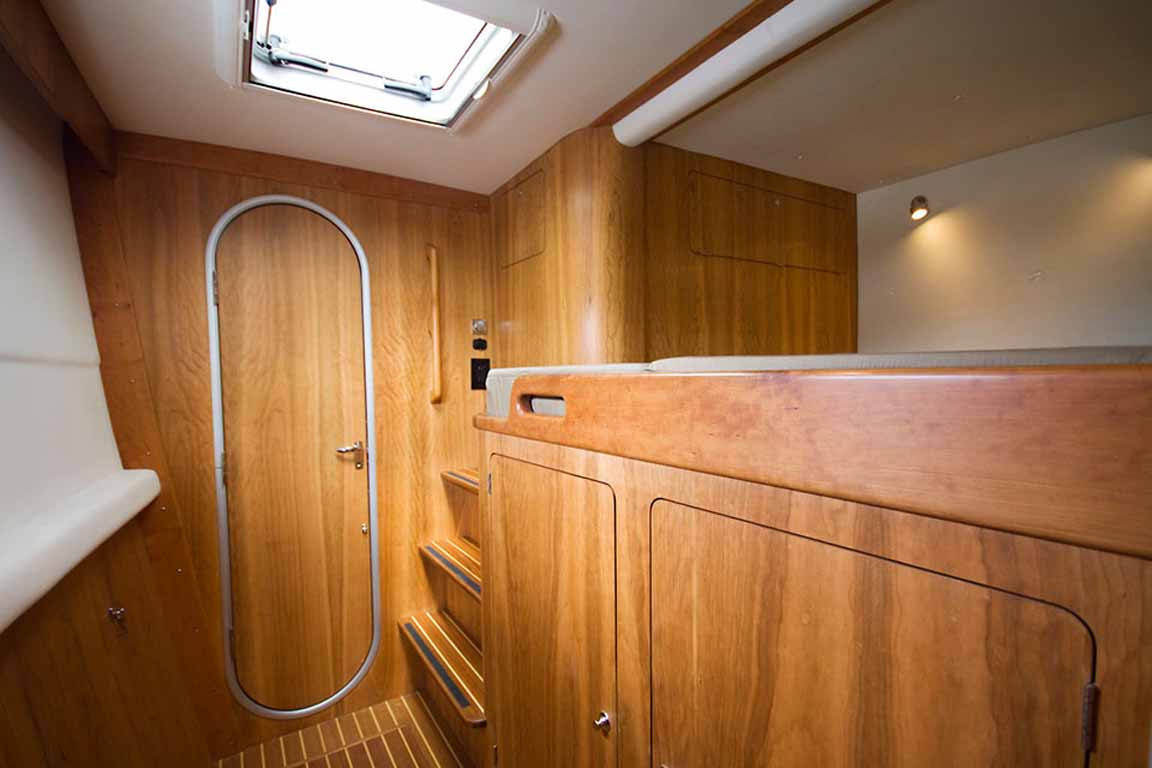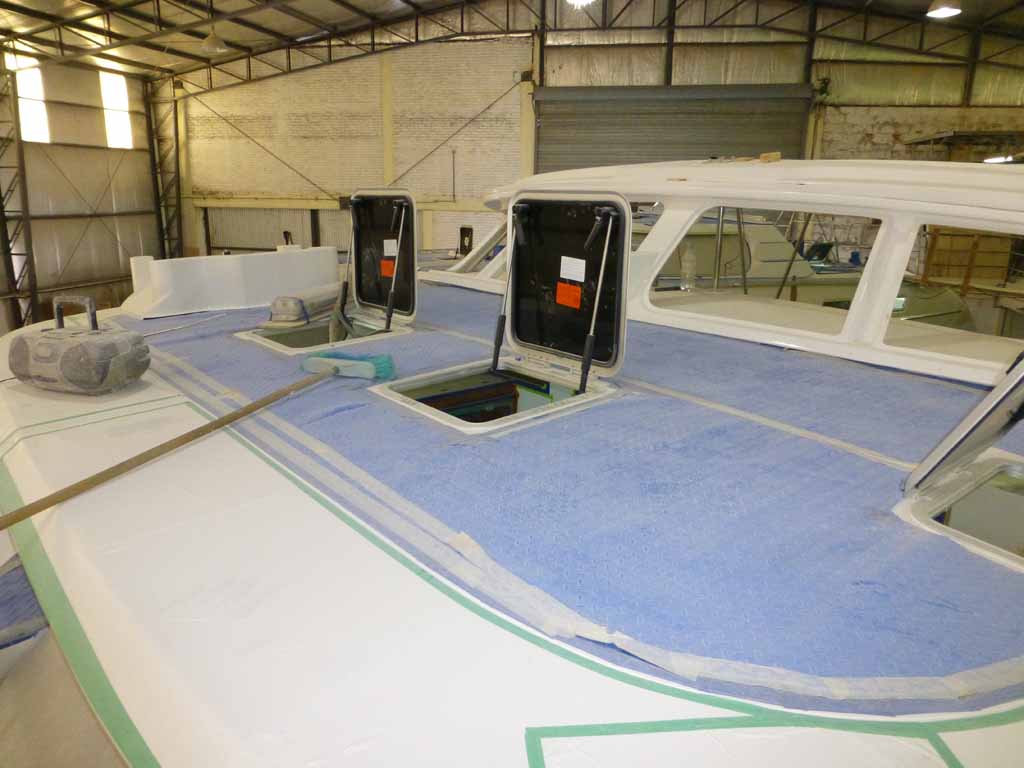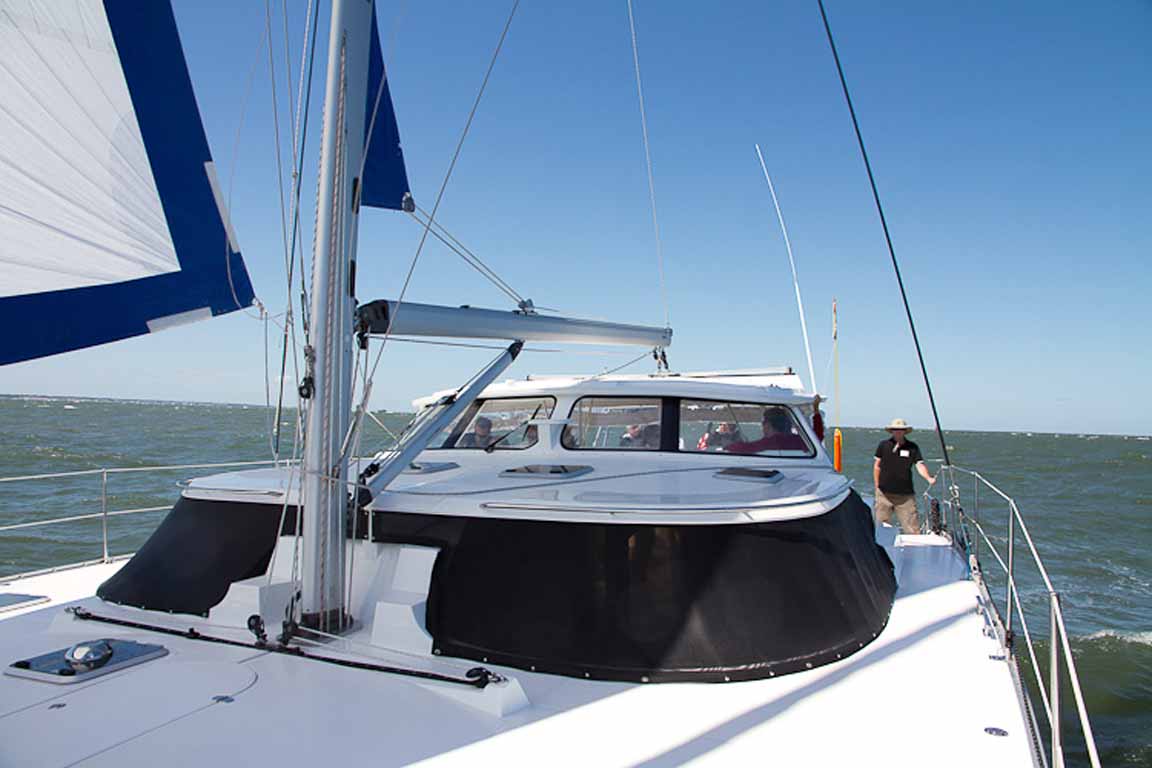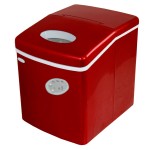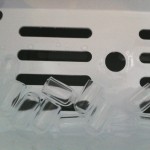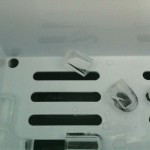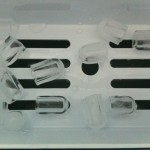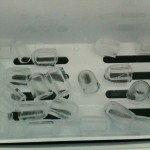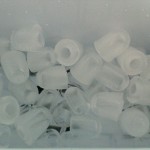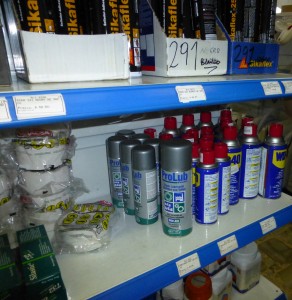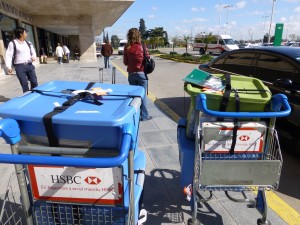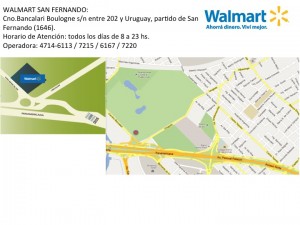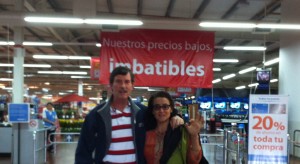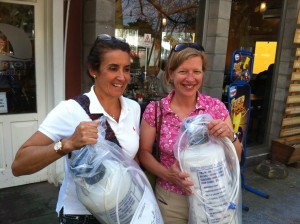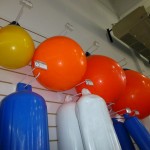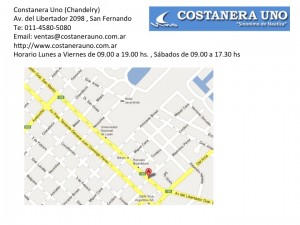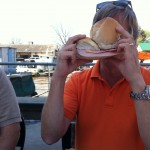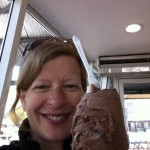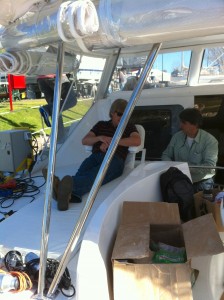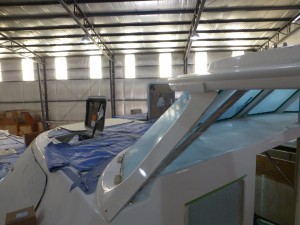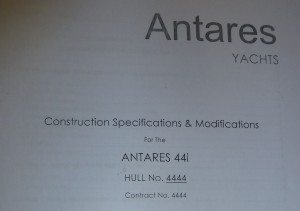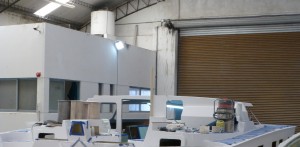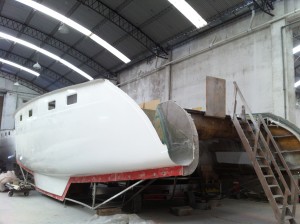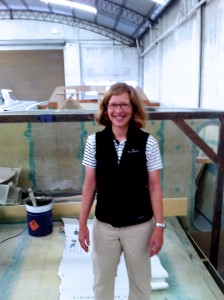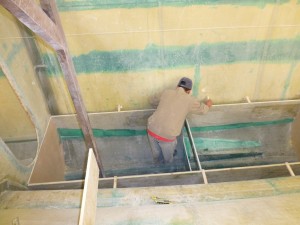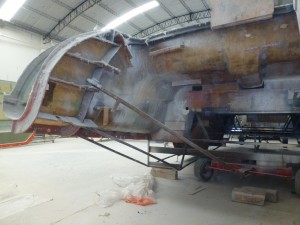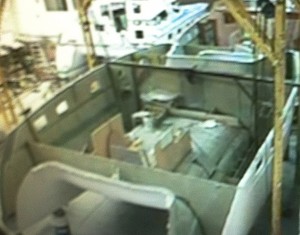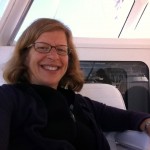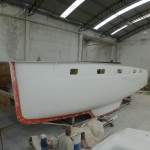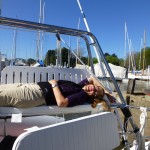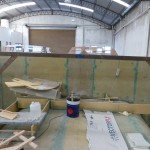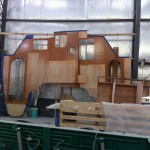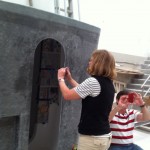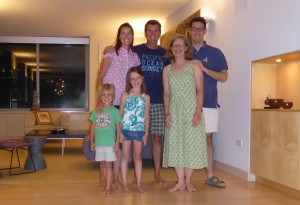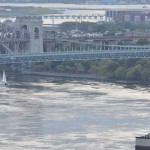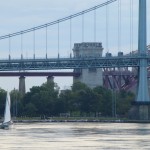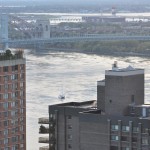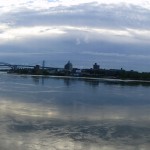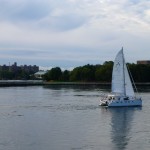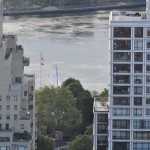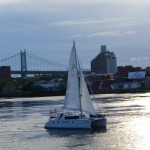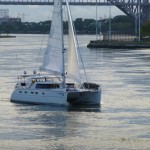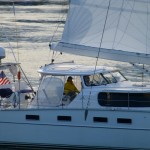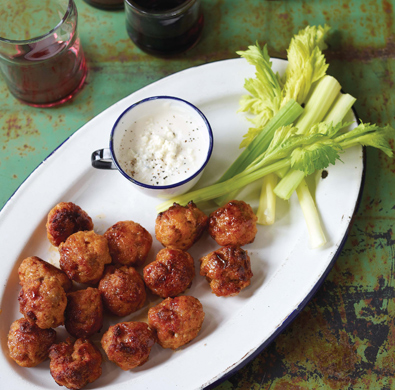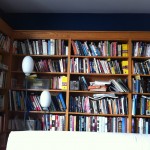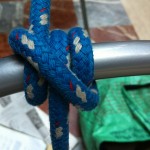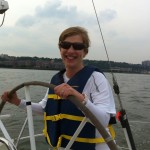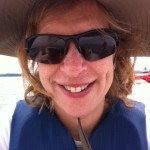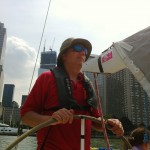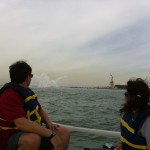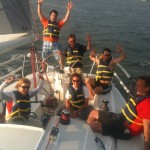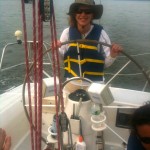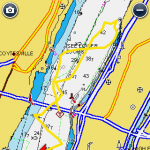Last week was my fourth visit to the San Fernando factory and, as always, it was great to see the progress on Two Fish. I have developed a routine for visiting.
During the months before my visit, I pack 4 or 5 plastic tubs of provisioning items – imagine buying supplies for a house on a desert island. The items include everything from tupperware to hacksaws to EPIRBs. I make sure all luggage is labeled well – including a label with where I’m staying in Argentina. We were lucky last December – one of our bags ended up in LAX and American Airlines was able to track us down and deliver it the next day, even though it was tagged with someone else’s airline sticker.
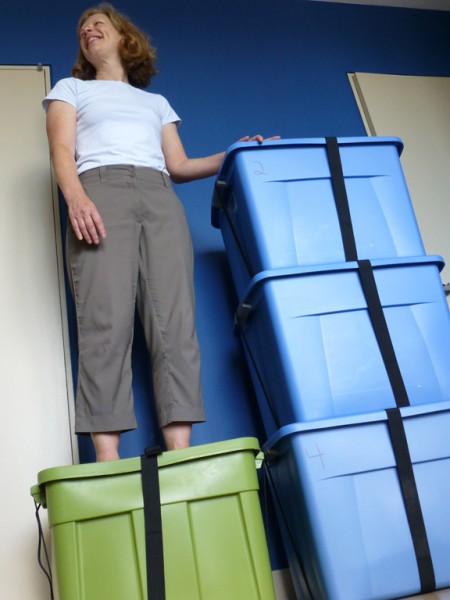
Packing Again
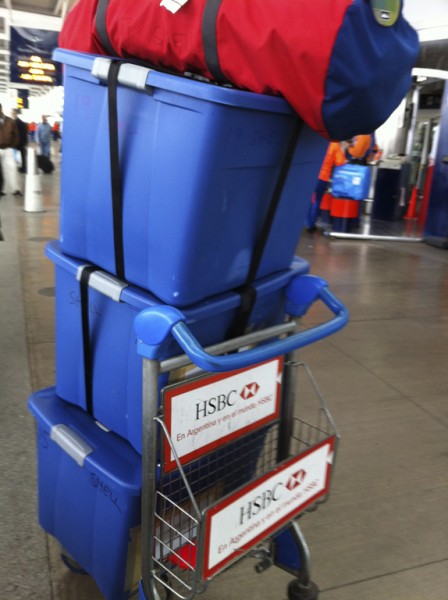
Balancing Luggage
Then I gather all of my travel info. I created a document containing an overview map and details regarding shopping locations near the factory.(Visit Guide) Given my limited Spanish, I find it really useful to have maps and photos. Next, I try to review some Spanish, including “Los objetos que traigo son todos de uso personal” (The objects I am bringing are all for my personal use). Argentina has very strict customs regulations and it is important not to bring new items or things that look like they are intended for resale. Electronics are especially scrutinized. Most of our stuff has been household goods and tools and so far we have just had to answer a few questions. I usually try to remember a few Spanish words to describe what I am bringing.
![]() Click here ,or, on the link to the left to see an English to Spanish Glossary of Nautical Terms prepared by the US Coast Guard Auxiliary Interpreter Corps. Click here for a shorter, alternative doc that I found on the web. I can’t guarantee that all of these will work in Argentina but they are worth a try. The Coast Guard also has a translator guide for English to Portuguese.
Click here ,or, on the link to the left to see an English to Spanish Glossary of Nautical Terms prepared by the US Coast Guard Auxiliary Interpreter Corps. Click here for a shorter, alternative doc that I found on the web. I can’t guarantee that all of these will work in Argentina but they are worth a try. The Coast Guard also has a translator guide for English to Portuguese.
After I landing and clearing Customs, I meet my pre-arranged ride and head to our storage unit. Then it is on to the factory for the real fun.
Our last visit was in December, when Two Fish was still in the fiberglass factory so it was a real thrill to see Two Fish in the finishing factory. Everyone at the factory is really helpful and we spent quite a lot of time reviewing our work order and looking at the boat. It is great to see items like hatches and anchor windlasses installed and to review plans for the rest of our items. While there was a lot of work to do, I did manage to walk on the boat multiple times a day to take photos and to sit in various spots and imagine myself in a finished boat on the water.

San Fernando
On my final day, I spent a few hours, wandering in San Fernando and I found a few more places where we can buy some last minute items. It was sort of sad to leave the factory and head back to NY because Two Fish was starting to feel like a home (yes, I have a vivid imagination). Below is a movie Jason put together, some photos and the visit guide.
I wonder if anyone would notice if I switched the boat number labels between our boat and the one due to splash in front of us? In the meantime, I have signed up for update emails from the Argentine Meteorological Organization so I can keep an eye on the weather on the Rio Plata.
- First View
- Welcome Aboard
- At Work
- Galley Cupboards are In
- Demonstrating Depth of Lazarette
